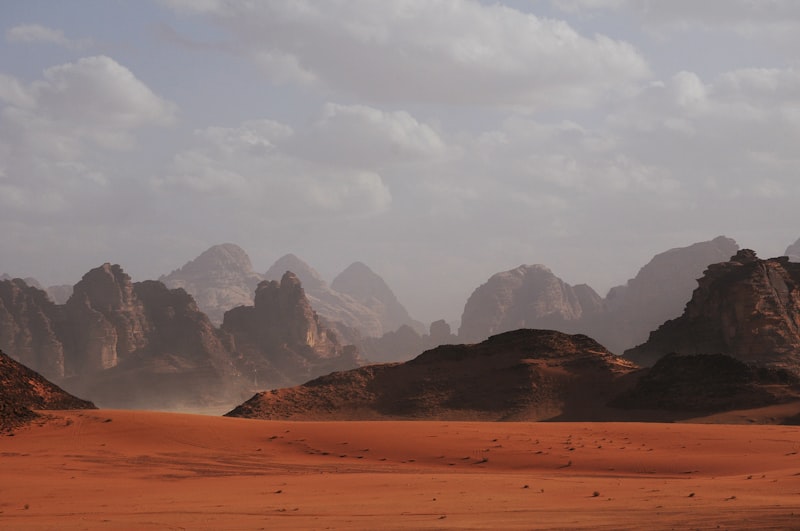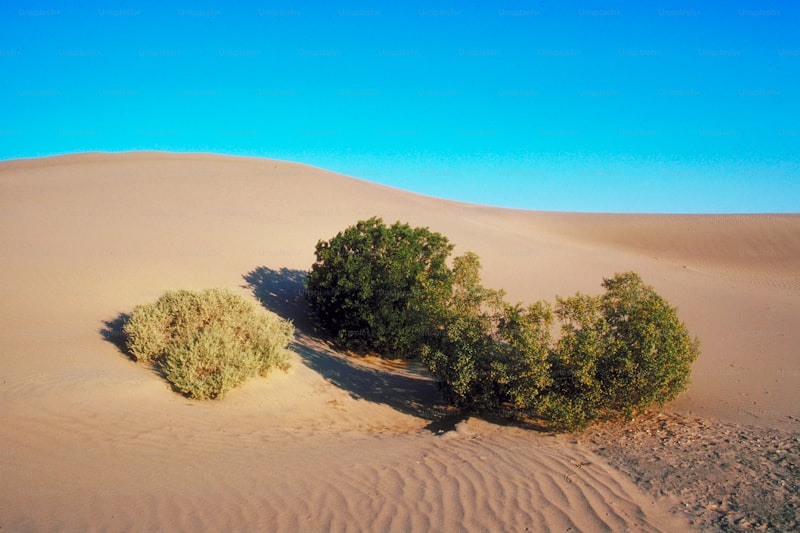Deserts, often seen as barren and inhospitable, surprise us with their vibrant tapestry of flora. The diversity of desert plants is a testament to nature’s resilience and adaptation. Imagine wandering through a desert landscape, where every plant tells a story of survival against harsh conditions.
One of the most intriguing adaptations of desert flora is their ability to conserve water. Succulents like cacti and agaves store water in their fleshy stems or leaves, allowing them to thrive in arid environments where rainfall is scarce and unpredictable. These plants have evolved over millions of years to maximize water retention, with some species even capable of surviving several years without water.
The Sonoran Desert, spanning parts of the southwestern United States and northwestern Mexico, boasts a remarkable diversity of plant life. Here, iconic saguaro cacti stand tall alongside prickly pears and ocotillo, their adaptations ranging from spines that deter herbivores to shallow root systems that quickly absorb rainfall.
In the Australian Outback, resilient species like the spinifex grass and the iconic boab tree dominate the landscape. These plants have adapted unique features such as deep roots to access groundwater and thick bark to protect against wildfires—a common hazard in these dry regions.
Across the Sahara Desert in Africa, where temperatures soar during the day and plummet at night, hardy species like the acacia tree and the date palm thrive. Acacias provide shade and shelter for animals, while date palms offer sustenance to desert dwellers with their nutritious fruit.
Exploring the diversity of desert flora reveals a world of adaptation and survival against all odds. Each plant, from the smallest succulent to the towering cactus, plays a crucial role in its ecosystem’s delicate balance. They have mastered the art of thriving in environments that seem uninhabitable, reminding us of nature’s astounding ability to evolve and endure.
Unveiling the Hidden Marvels: Exploring the Rich Diversity of Desert Flora
Desert flora showcases a stunning array of shapes, sizes, and colors, often surprising those who expect only monotony in such harsh conditions. Take, for instance, the barrel cactus, with its cylindrical shape and ribbed texture that stores precious water like a reservoir in the desert sands. Its spines not only deter thirsty animals but also reflect sunlight to minimize water loss—a marvel of natural engineering.
Among these resilient plants, the Joshua tree stands tall as a symbol of endurance in the Mojave Desert. Its twisted branches reach skyward like outstretched arms, crowned with clusters of waxy, cream-colored flowers that bloom against a backdrop of rugged terrain. Each tree can live for centuries, silently witnessing the ever-changing desert landscape.
But desert flora isn’t just about survival—it’s about adaptation and ecological harmony. Many species, like the creosote bush, release aromatic oils that deter predators and inhibit competing plants from taking root nearby. These bushes create their own microclimates, offering shade and shelter to a myriad of desert creatures, from insects to mammals.
Exploring the rich diversity of desert flora unveils a world where life thrives against formidable odds, where every bloom and thorn tells a tale of resilience and beauty. It challenges our perceptions of what a vibrant ecosystem can be, reminding us of nature’s boundless creativity in the harshest of environments.

As we delve deeper into these hidden marvels, we discover a profound respect for the intricate balance that sustains life in the desert—a testament to the power of adaptation and the enduring spirit of nature itself.
From Cacti to Succulents: A Journey Through the Diverse Desert Plant Life
Imagine a landscape where water is scarce and temperatures swing from scorching hot to freezing cold. In such harsh conditions, cacti have evolved ingenious ways to thrive. Their iconic spines are not just for show; they provide shade and reduce water loss by creating a microclimate around the plant. This adaptation allows cacti to survive in environments where other plants would wither.
But cacti are just the beginning of our desert botanical adventure. Succulents, with their thick, fleshy leaves and stems, are another marvel of desert adaptation. These plants store water in their tissues, enabling them to endure long periods of drought without withering away. From the compact rosettes of Echeveria to the towering stalks of Agave, succulents come in a stunning variety of shapes and sizes, each perfectly suited to its desert habitat.
What’s truly remarkable is how these plants have not only adapted to survive but also thrive in some of the world’s harshest environments. They’ve turned limitations into opportunities, using every trick in the book to make the most of sparse resources and extreme conditions. Their ability to store water, minimize surface area to reduce water loss, and even use their own bodies as reservoirs is a testament to millions of years of evolution.
Next time you see a cactus or a succulent, take a moment to marvel at its ingenuity. These plants aren’t just decorations in a desert landscape; they’re masterpieces of nature’s engineering. So whether you’re admiring a saguaro reaching for the sky or a cluster of colorful lithops nestled in the sand, remember that each one has its own story of survival and adaptation in the unforgiving desert.
Surviving in Extremes: How Desert Flora Thrive in Harsh Environments
Desert flora, with their remarkable ability to thrive in some of the world’s most hostile environments, offer a fascinating insight into nature’s resilience and adaptation. Imagine a landscape where scorching sun rays beat down relentlessly, and water is as scarce as a precious gem. Yet, against these formidable odds, desert plants not only survive but often flourish, showcasing ingenious strategies that have evolved over millennia.
One of the most striking adaptations of desert flora is their ability to minimize water loss. Take the iconic saguaro cactus, for instance. Its accordion-like pleats allow it to expand and contract as it stores water during periods of abundance and conserves it during droughts. This mechanism ensures that the saguaro can thrive even in the arid Sonoran Desert of Arizona.
Moreover, many desert plants have evolved specialized root systems that enable them to maximize water absorption. The deep taproots of desert shrubs like the creosote bush can reach far beneath the surface to tap into hidden water reservoirs that lie beyond the reach of other plants. This efficient use of resources allows these plants to survive extended periods without rainfall.
Interestingly, desert flora have also developed unique ways to protect themselves from the intense heat of the sun. Some plants, such as the desert lavender, have adapted small, silver-colored leaves that reflect sunlight, reducing the amount of heat absorbed. Others, like the ocotillo with its slender, cane-like stems, can quickly shed leaves during droughts to minimize water loss through transpiration.

In addition to these physical adaptations, desert plants have also formed complex relationships with their environment. Many rely on symbiotic relationships with fungi or bacteria in their roots to improve nutrient uptake from the nutrient-poor desert soils. This mutualistic partnership enhances the plant’s ability to thrive where others would struggle to survive.
Beyond Sand and Sun: Discovering the Vibrant Colors of Desert Plant Species
Have you ever paused during a desert hike to marvel at the hidden treasures scattered amidst the sands? Beyond the glaring sun and vast stretches of sand, desert landscapes hold a secret world of vibrant colors embodied by resilient plant species. These plants, adapted to harsh conditions, showcase nature’s ingenious artwork in the most unexpected places.
Picture this: amidst a seemingly barren expanse, a burst of magenta flowers springs forth from a spiky cactus, their vivid hues contrasting boldly against the arid backdrop. These desert blooms, like small miracles, thrive against all odds, their colors intensified by the sun’s relentless gaze. Each petal seems to echo a testament of survival, reminding us of nature’s resilience and beauty.
But it’s not just flowers that paint the desert canvas. Succulents, with their fleshy leaves, come alive in shades of emerald and jade, storing precious water for the long droughts. Their smooth, glossy surfaces reflect the sunlight, almost as if they’re capturing the essence of the desert’s glow in their own pigment.
Then there are the towering saguaros, standing like sentinels in the desert plains, their arms adorned with clusters of creamy white blossoms in spring. These majestic giants, with their ribbed, green skins, provide shelter and sustenance to a myriad of desert creatures, adding another layer of complexity to their role in the desert ecosystem.
Exploring the vibrant colors of desert plant species is akin to unraveling a mystery hidden in plain sight. It’s about discovering how life thrives in the most unlikely places, adapting and evolving to the rhythm of nature’s harshest symphonies. Each plant, with its unique palette of colors, tells a story of survival, resilience, and the indomitable spirit of life in the desert.
Next time you find yourself amidst the sands and sun of a desert landscape, take a moment to seek out these vibrant hues. Let the colors guide you deeper into the heart of nature’s resilience, where every shade tells a tale of adaptation and beauty against all odds.
Adaptation Wonders: The Ingenious Strategies of Desert Flora
One of the most fascinating adaptations of desert flora is their ability to conserve water. Take the iconic saguaro cactus, for example. With its accordion-like pleats, it expands to store water during rare rainfall, allowing it to survive long periods of drought. This unique ability not only sustains the cactus but also supports the diverse ecosystem around it, showcasing nature’s intricate balance.
Moreover, desert plants have developed specialized root systems to maximize water absorption. Deep taproots, such as those found in mesquite trees, delve deep into the arid soil to reach groundwater reserves that are inaccessible to other plants. This adaptation enables them to thrive in regions where water is scarce and sporadic.
Another marvel of adaptation is the unique leaf structures of desert flora. Unlike broad leaves that lose water through evaporation, desert plants often have reduced or modified leaves. Some, like the ocotillo, have small leaves that appear only after rainfall, minimizing water loss during dry periods. Others, such as the iconic Joshua tree, have tough, waxy coatings on their leaves to reduce water loss through transpiration.
Furthermore, desert plants have mastered the art of timing their growth and reproduction with environmental cues. Many species remain dormant for long periods, sprouting and flowering rapidly after rainfall to make the most of favorable conditions. This strategy ensures survival and successful reproduction despite unpredictable desert climates.
Beauty in Barrenness: Captivating Desert Flora You Need to See
Venturing into the world of desert landscapes unveils a surprising treasure trove: captivating desert flora that defies the odds of arid environments. In these barren expanses where water is scarce and temperatures extreme, nature thrives in the most unexpected forms.
One of the most striking desert plants is the Saguaro cactus, standing tall with its majestic arms reaching towards the sky. Found predominantly in the Sonoran Desert, these giants can grow over 40 feet in height and live for centuries. Their iconic silhouette against the backdrop of a fiery desert sunset is a sight that leaves visitors in awe.
For those who seek a splash of color amidst the desert’s muted tones, the Desert Marigold offers a delightful surprise. With its golden petals shimmering under the relentless sun, this resilient flower blooms abundantly across desert landscapes, adding a vibrant touch to the otherwise harsh environment.
The Joshua Tree, with its twisted branches and unique form, epitomizes the tenacity of desert life. These ancient trees, found in the Mojave Desert, stand as silent sentinels of time, their presence a testament to nature’s ability to adapt and thrive against all odds.
Exploring the desert flora is not just about observing plants; it’s about experiencing resilience in its purest form. Each species has adapted over millennia to survive in harsh conditions, offering a glimpse into the resilience and beauty that define these arid landscapes.

Next time you find yourself in a desert region, take a moment to admire the intricate beauty of its flora. From towering cacti to delicate wildflowers, the desert offers a unique perspective on life, where beauty thrives in the most unexpected places.
Frequently Asked Questions
What are examples of edible plants found in desert ecosystems?
Explore examples of edible plants thriving in desert ecosystems, highlighting species like prickly pear cactus, mesquite trees, and agave. Discover their nutritional benefits and culinary uses.
Which types of desert plants bloom during different seasons?
Discover which desert plants bloom in each season with our concise guide. Learn about the diverse species that thrive in desert climates, from springtime cacti to summer-blooming succulents and fall-winter desert wildflowers.
What are some unique adaptations of desert plants to survive extreme heat?
Learn about unique adaptations of desert plants to survive extreme heat, including specialized water-storing tissues, reduced leaf surfaces to minimize water loss, and deep root systems to access water deep underground.
How do desert plants conserve water in arid environments?
Learn how desert plants survive in dry climates by conserving water through specialized adaptations such as deep root systems, thick waxy coatings on leaves, and modified metabolic processes that minimize water loss.
How do desert plants contribute to local ecosystems and biodiversity?
Learn how desert plants contribute significantly to local ecosystems and biodiversity through their unique adaptations to extreme conditions, providing habitats, food sources, and essential ecosystem services that support diverse wildlife and promote ecological resilience.


